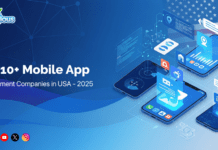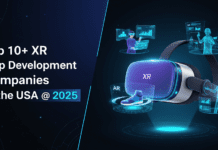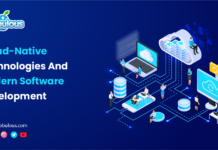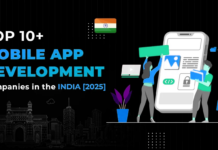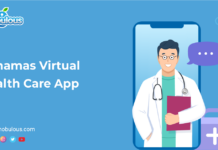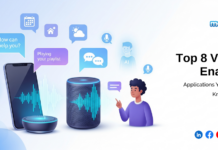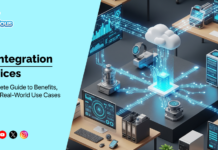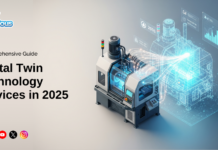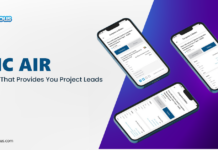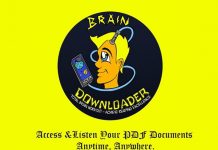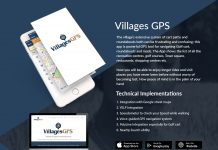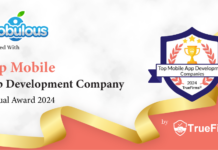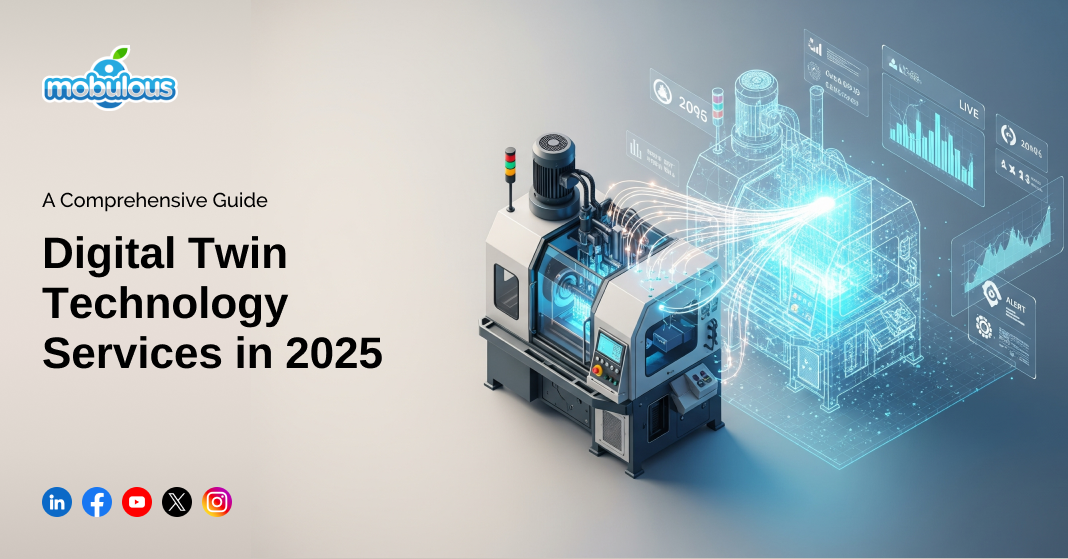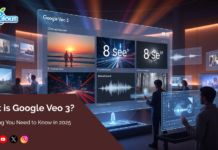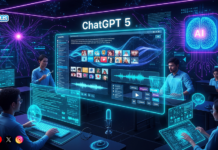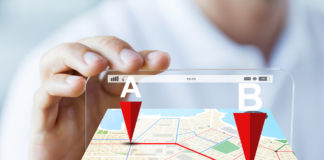What is Digital Twin Technology?
A digital twin is a virtual copy of a real-world object, process, or system that stays connected to the physical version through live data. Sensors send this data to the digital model, which helps companies monitor, simulate, and analyze real conditions in real time. The result is better decision-making and smoother operations.
The strength of digital twin technology services is in turning live data into insight. It shows what’s happening now and also helps predict what’s coming next. Engineers and managers use this tool to test ideas. They can make changes digitally before touching anything in the real world, which saves time, money, and risk.
As of 2025, digital twin technology services are no longer just for big companies. It’s showing up in factories, hospitals, cities, and even retail stores. These digital models help spot problems early. They also help improve performance, which is why more industries are adopting them as part of daily operations.
To support real-time data flow and scalable infrastructure for your digital twin, consider partnering with a trusted cloud migration & hosting company to get started seamlessly.
Benefits of Digital Twin Technology Services
1. Operational Efficiency Boost
Digital twins help companies run smoothly. They give live updates on machines and systems, which helps teams fix problems before they grow. It also helps adjust settings for better output. These small improvements add up fast. The result is a faster, leaner, and more reliable operation across the board.
2. Cost Reduction Advantage
One of the biggest benefits is saving money. Digital twin technology services reduce downtime and cut repair costs. They also let companies test ideas digitally, which means less wasted material and fewer failed prototypes. Over time, this leads to major savings in both operations and product development.
3. Product Quality Improvement
Digital twins allow for detailed testing before production starts. Engineers can model real-world use and spot design flaws early, which leads to better performance and fewer defects. Quality control improves because the digital model highlights problems. The result is a more reliable product that meets customer expectations.
4. Faster Market Entry
Companies using digital twins can move faster. They test and tweak designs in the digital space, which shortens development cycles. It also reduces the number of physical prototypes needed. All of this cuts time from idea to launch. Businesses that use digital twin technology services often reach the market ahead of their competitors.
5. Sustainability Gains
Digital twins help cut waste and lower energy use. They track where resources are used and show where they’re wasted, which makes it easier to improve efficiency. Companies can reduce emissions and improve environmental performance. These gains are good for the planet and also help meet regulatory goals.
Types of Digital Twin Technology Services
1. Component Twins
Component twins focus on one part of a machine or system. Think of a single jet engine blade or a car’s brake pad. These twins help engineers study performance in detail. They allow for precise tracking of wear, stress, and failure, which helps reduce downtime and avoid expensive breakdowns.
2. Asset Twins
Asset twins represent a full machine or device. It could be an entire engine, a wind turbine, or a conveyor belt. These digital twin technology services offer a complete view of that asset’s health. They help track performance, schedule maintenance, and avoid sudden failures, which leads to fewer disruptions and longer equipment life.
3. System Twins
System twins link multiple machines or devices into one digital view. They show how different parts interact in real time. For example, they can model an entire production line or power grid, which helps identify weak points. It also helps improve coordination between assets and reduce inefficiencies across the system.
4. Process Twins
Process twins simulate workflows, which might include logistics, patient care, or factory processes. The digital model follows each step in the workflow. It helps spot delays, waste, or errors, which lets companies test changes digitally. They can fix problems in the model before adjusting anything in real life.
A skilled web app development company can help you build intuitive dashboards and control panels to interact with your digital twin in real time.
How to Choose the Right Digital Twin Technology Partner?
1. Define Use Cases
Start by knowing what you want to solve. Is it equipment monitoring? Process tracking? Something else? Clear goals will help you find the right provider. Without a solid use case, it’s easy to waste time and money. Be specific about the problems you’re solving and the outcomes you expect.
2. Assess Technical Expertise
Look for a partner with deep industry knowledge. They should understand both digital twin technology and your specific field. Ask for examples of past work. Review their case studies and talk to references. A partner who knows your environment will help you avoid common pitfalls and get better results.
3. Evaluate Data Handling
Data is the backbone of digital twins. Your partner should know how to manage large, real-time data streams. Ask how they store, protect, and organize information. A strong platform should also support secure access. Make sure their tools can handle your current needs and grow as your system expands.
4. Check for Scalability
Start small, but think big. Your digital twin setup should grow with your business. Ask how their system handles expansion. Can it connect to more devices? More locations? A scalable platform protects your investment. It also means you won’t need to switch systems as you grow.
5. Consider Integration Ease
Digital twins should work well with your current technology. If it doesn’t connect easily, you’ll hit roadblocks fast. Ask about API support, connectors, and setup time. A good provider will have proven integration options. Make sure the digital twin technology services fit into your existing workflow without a full rebuild.
Working with an experienced business consulting company helps you define clear goals, prioritize use cases, and align your digital twin strategy with real business outcomes.
Challenges of Implementing Digital Twin Technology Services
1. Data Integration Issues
Digital twins pull data from many sources. Machines, sensors, and software platforms all speak different data languages. Combining them is tough, which often takes longer than expected. Poor integration can lead to incomplete or inaccurate models. Clean, connected data is essential for the twin to work properly.
2. Quality of Data
Bad data leads to bad results. If the data feeding your digital twin is inaccurate or missing, the model becomes useless. Many companies struggle with outdated or poorly structured information. Before using a twin, you need to clean and organize your data, which takes time and planning.
3. High Upfront Costs
Starting with digital twin technology services can be expensive. The setup may include hardware, software, integration, and staff training. For small or mid-sized businesses, the initial investment is a serious barrier. It’s important to weigh the upfront costs against the long-term savings and benefits.
4. Cybersecurity Risks
Digital twins handle sensitive data, which makes them a target for cyberattacks. Without strong security, your systems could be exposed. You need protection at every level, like devices, networks, and data centers. Choose a provider that takes security seriously and offers regular audits, backups, and encryption.
5. Lack of Skilled Talent
Digital twins require skilled teams. You need people who understand both the physical systems and the digital tools, which is hard to find. Many companies face a skills gap when starting out. Some invest in training, while others work with outside experts to fill the gap.
Future of Digital Twin Technology Services
The digital twin market is growing fast. Experts expect it to reach over $155 billion by 2030. Why? Because it helps companies run smarter. It saves money, improves output, and speeds up innovation. More industries are making it part of their digital transformation strategy.
AI and machine learning are taking digital twins to the next level. In the future, twins won’t just reflect real systems. They’ll predict what’s coming next and make recommendations. Some will even make automatic decisions, which means faster responses and fewer mistakes in critical systems.
As cloud computing and IoT mature, twins become easier to use. You won’t need a big IT team to manage them. Even smaller businesses will be able to adopt digital twin technology services. The future is about smarter systems that improve themselves over time.
If you’re looking to harness this power, partnering with an experienced AI/ML development company can help you unlock the full potential of your digital twin strategy.
Applications for Digital Twin Technology Services
1. Manufacturing Optimization
Digital twin technology services help factories improve how things run. They let you simulate production lines. You can monitor machines in real-time and predict when something might break, which means fewer breakdowns. It also means better quality control. Companies can test changes digitally before making them in real life, which saves time and money.
2. Healthcare Innovation
In healthcare, digital twin technology services let doctors model a patient’s body. They can test different treatments and simulate surgeries, which helps avoid risks. It also allows for personalized care. A digital twin of a heart, for example, can help predict issues. Doctors get a clear view without touching the patient, which is powerful and safe.
3. Smart Construction
Construction firms use digital twin technology services to plan and manage projects. They track real-time progress and spot delays early. Digital models can show where stress points might appear. They also help reduce energy waste. Maintenance teams use the data to catch problems before they get worse, which keeps buildings safer and more efficient.
4. Urban Planning Insights
Cities use digital twin technology services to understand how everything works. They model traffic, electricity use, and water systems. Planners test changes before rolling them out. If a road redesign is needed, they simulate it first, helping avoid expensive mistakes. These tools make cities smarter and more responsive to real-world needs.
Conclusion
Digital twin technology services are changing the way industries operate. They make systems smarter and more efficient. Whether it’s medicine, construction, manufacturing, or city planning, the benefits are clear. These tools help people make better choices. Virtual models give us real-world power. The future isn’t coming, but it’s already here, and digital twins are leading it.
FAQs – Digital Twin Technology Services
Q1. What are digital twin services?
Digital twin services offer cloud-based platforms to create digital versions of real-world things. You can model machines, systems, or entire buildings. These tools let users simulate, monitor, and predict outcomes. It helps reduce risks and improve efficiency. The digital twin acts like a test lab without touching the real object.
Q2. Which technology is used in digital twins?
Digital twins rely on a mix of advanced tools. They use IoT to collect real-world data. AI and machine learning help make sense of that data. Cloud computing stores and manages everything. Together, these technologies create powerful digital models, which let users simulate, test, and improve real-world performance in real time.
Q3. What is an example of a digital twin?
Google Maps is a digital twin of Earth. It shows roads, buildings, and real-time traffic. It updates as things change. In industry, a jet engine can have a digital twin. Engineers use it to predict problems and plan maintenance. Digital twins make it easier to test, monitor, and improve real-world systems.
Q4. What are the four types of digital twins?
There are four main kinds, and each one gives different insight.
- The Component Twins model single parts.
- Asset Twins represent full machines.
- System Twins show connected systems, like a power grid.
- Process Twins simulate workflows or operations.
Q5. Do digital twins use AI?
Yes, AI is a core part of digital twins. It helps analyze data in real time. AI finds patterns and makes predictions. It can even suggest actions. Over time, it learns from new data, which makes the digital twin more accurate. The smarter the AI, the better the digital twin performs.
Q6. Which software is used for digital twins?
Several tools help build digital twins. AnyLogic, Ansys Twin Builder, and Autodesk Tandem are common. Siemens Xcelerator is also widely used. These tools combine modeling, simulation, and real-time data. They help create digital copies of systems and assets, which allows users to test and optimize without touching the real thing.
Q7. Is a digital twin an IoT?
No, but it uses IoT heavily. IoT devices collect live data from physical things, whose data powers the digital twin. Without IoT, the twin wouldn’t be accurate. So while digital twins aren’t IoT themselves, they rely on it. IoT is the data stream. The digital twin is the smart model built from it.
Q8. Is Google Maps a digital twin?
Yes, in a basic way. Google Maps shows a digital version of real-world roads and locations. It uses real-time data like traffic and construction, which makes it a type of digital twin. It mirrors the physical world. People use it to plan, monitor, and navigate through real-life environments.
Q9. What are the benefits of digital twins?
Digital twins help reduce costs and improve performance. They allow teams to test ideas without risk. You can find and fix problems before they happen, which leads to faster innovation. Maintenance becomes proactive, not reactive. Operations run smoother. Overall, they turn data into smarter decisions and real business value.
Q10. Is a digital twin a new technology?
The idea isn’t new. It started in the 1960s with space missions. What’s new is the technology that supports it. Better computers, faster internet, and cloud services have made it practical. Now, digital twin technology services are available to almost any industry. It’s an old idea with modern power.
Q11. What is the difference between a digital twin and a simulation?
A simulation typically models a process for a specific, limited time to answer a particular question. A Digital Twin Technology is a persistent, living model that is continuously updated with real-time data, allowing for ongoing simulation and analysis throughout an asset’s entire lifecycle.
Q12. How much does a digital twin cost in 2025? The cost varies dramatically based on complexity. A simple component twin might cost tens of thousands of dollars, while a complex factory

